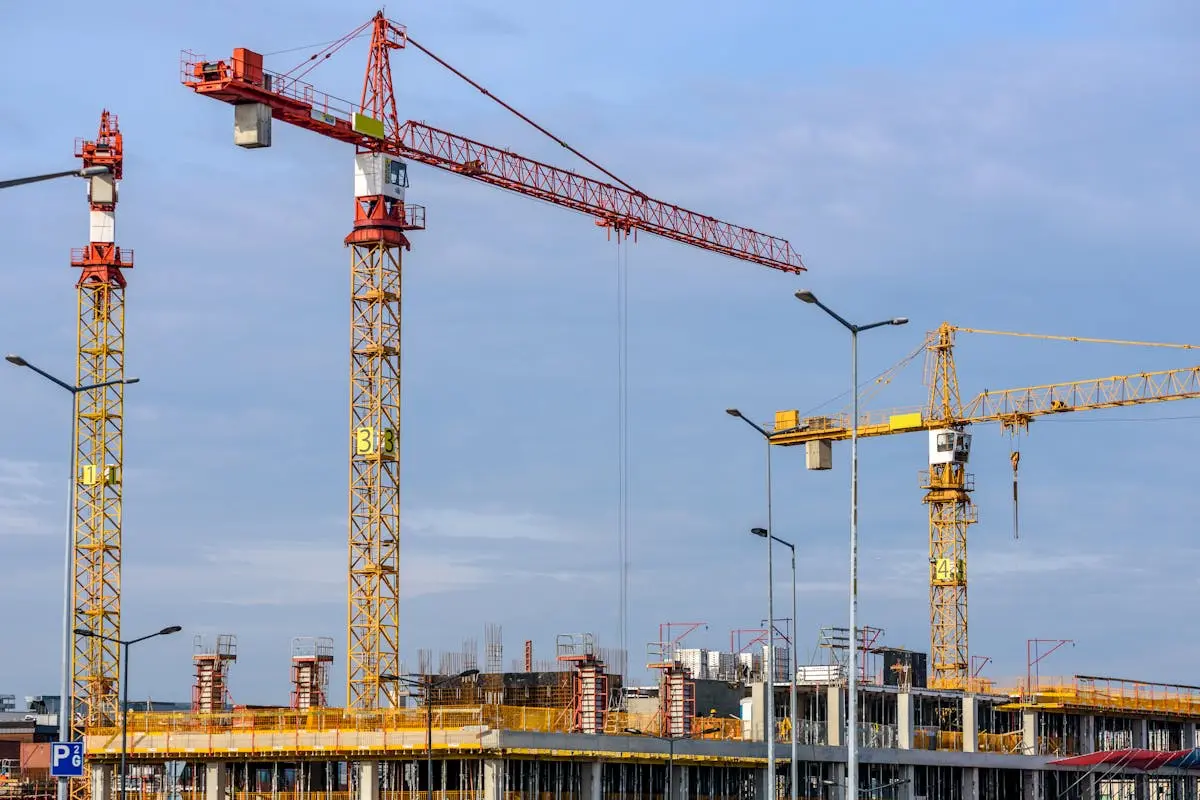Introduction to certified riggers in construction
Certified riggers play a crucial role in ensuring safety on construction sites. They are trained professionals responsible for properly moving heavy loads using cranes and other equipment. Here are key points to remember about certified riggers:
- Certified riggers are trained to assess potential risks and ensure that all lifting operations are conducted safely.
- They must have a thorough understanding of equipment capabilities and load capacities to prevent accidents.
- Certified riggers are essential for maintaining a secure work environment and preventing injuries to workers and damage to property.
Remember, when it comes to heavy lifting in the construction industry, certified riggers are the experts you can rely on for a safe and efficient operation.
What is a certified rigger?
A certified rigger is a construction worker who is trained and qualified to safely move heavy loads using cranes and other equipment. They have undergone specialized training to ensure that loads are lifted and moved securely, preventing accidents and injuries on construction sites. Certified riggers play a crucial role in maintaining safety standards and preventing potential hazards during lifting operations.
Safety standards in the construction industry
Safety standards in the construction industry are crucial to prevent accidents and ensure the well-being of workers. Certified riggers play a vital role in upholding these standards by following strict guidelines and procedures to minimize risks. Adhering to safety protocols such as proper equipment inspection, secure rigging techniques, and regular training sessions are essential to create a safe work environment. Certified riggers help maintain compliance with industry regulations, reducing the chances of accidents on construction sites.
Responsibilities of certified riggers
Certified riggers play a crucial role in ensuring safety on construction sites. They are responsible for inspecting and preparing materials for lifting operations, attaching loads to cranes or other lifting equipment, and communicating with crane operators to ensure proper lifting procedures. Certified riggers must also follow safety protocols and adhere to industry regulations to prevent accidents and injuries. Their expertise and attention to detail help maintain a secure work environment, protecting both workers and property.
Importance of certification for riggers
Certification is crucial for riggers in the construction industry because it demonstrates their skills and expertise in ensuring safety on-site. A certified rigger has undergone specific training to handle equipment properly, assess risks, and follow safety protocols to prevent accidents. Certification provides assurance that the rigger is competent and knowledgeable in their role, contributing to a safer work environment for everyone involved. Employers often prioritize hiring certified riggers to uphold high safety standards and minimize risks on construction sites.
Types of rigging equipment used in construction
Different types of rigging equipment are commonly used in construction projects today. Some of the most common types include:
- Wire ropes: These sturdy ropes are made of steel and are used for lifting heavy loads.
- Chains: Chains are durable and robust, making them ideal for lifting and securing heavy materials.
- Slings: Slings are flexible straps that can be used to lift and move a variety of loads safely.
Each type of rigging equipment has its specific uses and advantages, so knowing which one to use in different situations is crucial for the safety and efficiency of construction projects.
Risk factors in rigging operations
Rigging operations involve many risks that can lead to accidents if not handled properly. Some common risk factors in rigging operations include overloading equipment, using damaged rigging gear, improper rigging techniques, lack of proper training, and working in adverse weather conditions. These risk factors can result in serious injuries, property damage, and even fatalities in the construction industry. It is crucial to prioritize safety measures and ensure that certified riggers are involved in all rigging operations to minimize the risks associated with rigging work.
Training and certification process
To become a certified rigger, individuals must undergo specialized training to learn how to safely handle, move, and secure heavy loads in the construction industry. The certification process involves attending rigging courses that cover topics like load calculation, sling hitches, and rigging gear inspection. After completing the training, candidates must pass a written exam and a hands-on practical assessment to demonstrate their skills. Being a certified rigger ensures that workers can perform their job tasks safely and efficiently, reducing the risk of accidents on construction sites.
Benefits of hiring certified riggers
Certified riggers bring expertise to ensure safety on construction sites. They are trained to handle equipment properly, reducing the risk of accidents. By hiring certified riggers, you can improve efficiency in lifting operations, meet safety regulations, and avoid costly delays due to mishaps. Certified riggers also have a deep understanding of load capacities and proper rigging techniques, making them valuable assets for complex lifting tasks.
Conclusion: Ensuring safety and efficiency in construction operations
To wrap it up, having certified riggers in the construction industry is crucial. They play a vital role in maintaining safety and efficiency in construction operations. By ensuring that riggers are properly trained and certified, construction companies can prevent accidents and delays, ultimately saving time and money. Certification ensures that riggers have the necessary skills and knowledge to handle equipment and loads safely. It also demonstrates a commitment to upholding industry standards and regulations. Hiring certified riggers is a smart investment for any construction project, as it helps to mitigate risks and promote a culture of safety on the job site.

